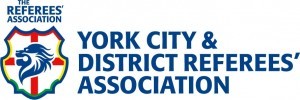Careless, Reckless or Using Excessive Force – an evaluatation on reckless challenges and serious foul play
Referees at Select Group level continue to meet up on a regular basis to discuss, review and debate decisions that are made at National List level within the PGMOL. One of the most difficult situations for a referee, for various reasons, is to differentiate between a reckless foul and a challenge that is considered to be one of serious foul play. At a recent seminar referees identified a series of criteria which they believe will help referees at all levels distinguish between these two types of offences.
Firstly, a reminder of what Law 12 states:
“Careless” means that a player has shown a lack of attention or consideration when making a challenge or that he acted without precaution. (No further disciplinary sanction is needed if a foul is considered to be careless)
“Reckless” means that the player has acted with complete disregard to the danger to, or consequences for, his opponent. (A player who plays in a reckless manner must be cautioned)
“Using excessive force” means that the player has far exceeded the necessary use of force and is in danger of injuring his opponent. (A player who uses excessive force must be sent off)
When deciding whether a challenge is worthy of a sanction i.e. punishable by a yellow or red card, take into consideration the following factors:
The position of the ball, what are the chances of playing the ball in a fair manner? A tackle may still be considered reckless (or even with excessive force) even though the ball is played. Where contact is made with the ball and opponent at speed and without consideration for the potential danger to the opponent, it should be punished appropriately.
The speed or the intensity of the challenge. Is the player in control of his actions, or is he “off the ground” and out of control when he makes the challenge?
The part of the body used in the challenge. Has the opponent used his studs to cause serious injury to an opponent or does he use his leg or foot to tackle unfairly?
Where on the field of play has the offence taken place, for example, a handball offence can have three different outcomes depending where the offence was committed.
The element of Intent or malice – is the player purely focused on his opponent and with no concern for the position of the ball.
| Final Conclusion and Advice If a player uses excessive force or endangers the safety of an opponent, it does not matter whether the tackle is from behind, the front, of from the side. Particular emphasis should be placed on the elimination of challenges where a player gives no consideration to the safety and welfare of an opponent. Challenges of this nature must be considered as serious foul play and the offender must be sent off. Brutality must always result in a red card. |

